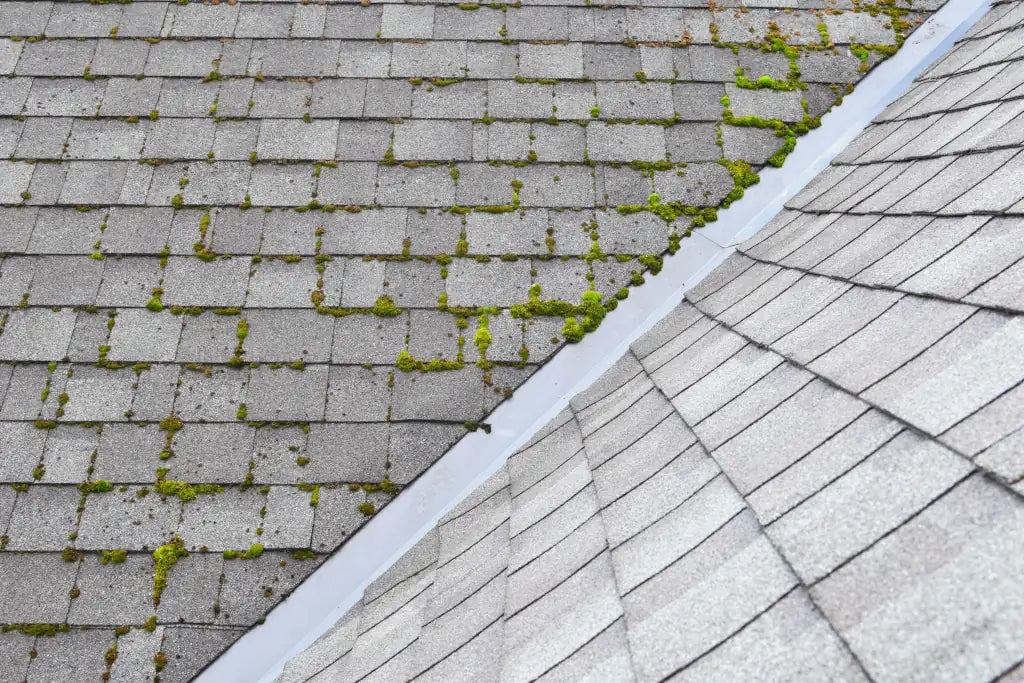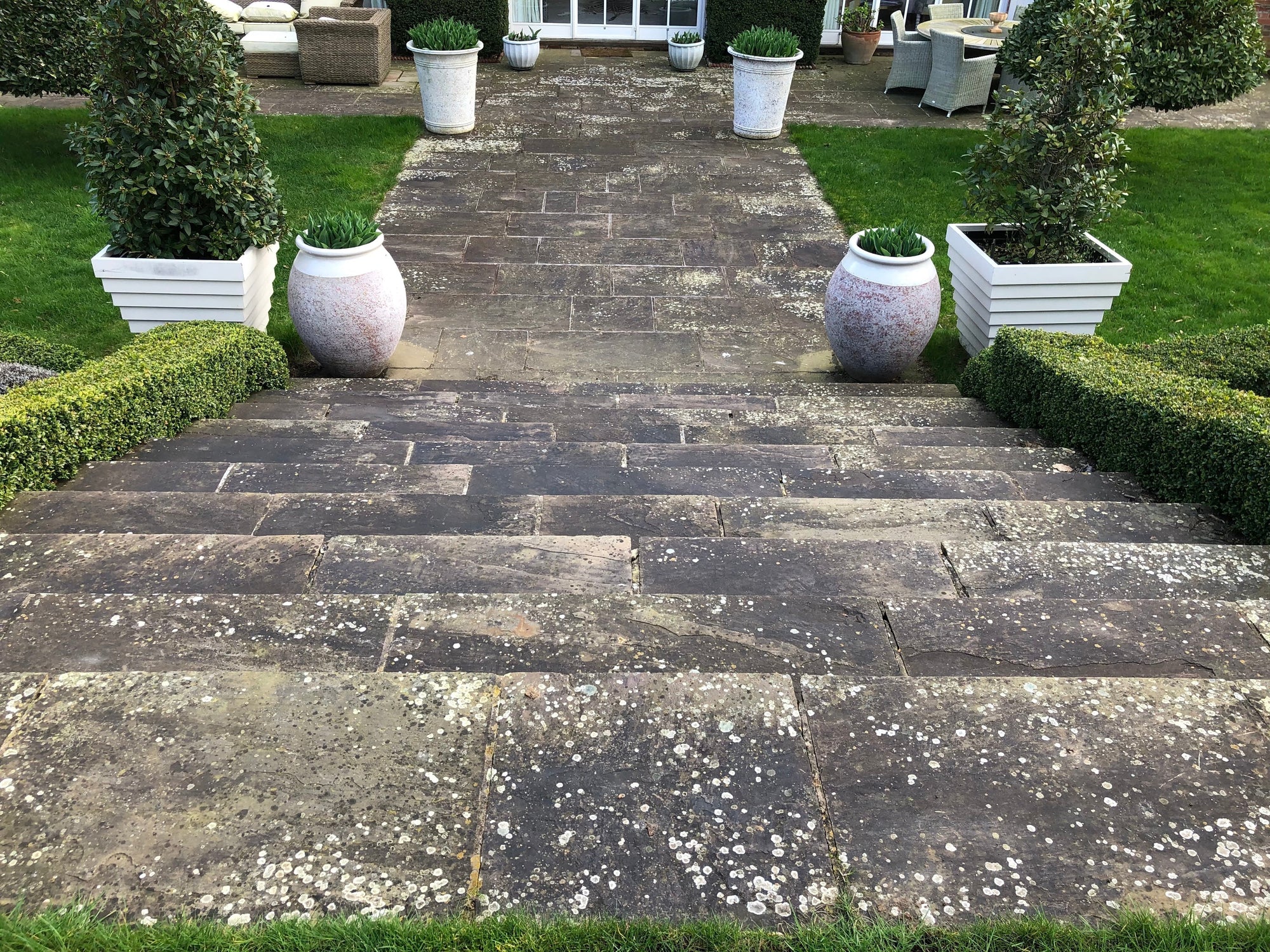Roof moss is a type of non-vascular plant that typically grows in damp, shaded environments, and that includes rooftops, especially in the UK, where our climate creates ideal growing conditions. You’ve likely seen it as a dense, green or yellowish clump covering parts of tiles or slates, often thriving on the north-facing side of a roof that doesn’t receive much sunlight. While it may seem harmless or even rustic, roof moss can cause significant damage to the structural integrity and appearance of a property if left unmanaged. We often deal with this issue in customer enquiries, particularly those concerned about moss leading to water ingress or roof tile damage. From experience, we’ve found that moss can lift and dislodge tiles over time, create pathways for moisture to seep underneath, and even add weight that strains the roof structure. It can also clog gutters and downpipes, resulting in further drainage issues. Beyond the physical problems, there’s also a clear aesthetic impact – moss growth tends to make roofs look aged and neglected, which can affect property value.
Why Does Moss Grow on Roofs?
Moss spores are airborne and can settle on any surface where moisture and shade are present. Roofs with overhanging trees, poor drainage, or persistent dampness offer an ideal habitat. Certain materials, such as concrete or clay tiles, are particularly prone due to their porosity, which allows moss to anchor and spread more easily. We’ve found that moss problems are more common in older buildings or those located in leafy, rural areas – conditions which are common across many UK homes. The moss acts like a sponge, soaking up and retaining water, which keeps the roof damp for longer than it should be. In winter, this retained moisture can freeze and expand, exacerbating the risk of cracks and structural deterioration. It's something we've seen time and again in customer homes, and why proactive roof care is so important.
Is Moss on Roofs Dangerous?
While moss itself isn’t toxic, its presence is far from benign. It can lead to multiple issues if not treated appropriately. Structurally, as mentioned, it can loosen tiles, damage underlayment, and increase the risk of leaks. From a health and safety standpoint, fallen moss can make ground areas slippery, particularly patios and paths, which is another concern raised by many of our clients. When combined with algae or lichen, it creates not just a roof issue but a broader property maintenance challenge. We often point customers to our professional cleaning services when moss has become extensive, because DIY approaches, like scraping or jet washing, can inadvertently damage the roof or accelerate deterioration.
How to Prevent and Manage Roof Moss
Preventing moss starts with good roof hygiene and maintenance. We always recommend regular roof inspections, especially in late autumn and early spring. Keeping gutters clear, trimming back overhanging branches, and ensuring good air circulation across the roof can help reduce moss formation. Treatments like biocide washes are effective at killing off moss spores and preventing regrowth. Where moss is already present, mechanical removal followed by the application of a suitable roof moss killer can be effective, though it must be done carefully to avoid damaging the tiles. Some of our most successful outcomes have come from combining gentle cleaning methods with targeted treatments and follow-up inspections. We also encourage the use of professional services where appropriate. DIY solutions might seem cost-effective, but the risk of causing further damage is significant without proper training. Many customers also don't realise that improper treatment can void roof warranties or insurance clauses.
Further Resources
For those seeking more information on managing moss and algae across their property, RHS (Royal Horticultural Society) provides helpful guidance on moss in outdoor spaces, while Historic England offers insights into caring for older properties, where roof moss can be particularly problematic. If you're dealing with roof moss and unsure of the best next step, it's worth considering a tailored assessment. Experience has shown us that no two properties are alike, and effective moss management is always more successful when it’s based on the specific conditions of your roof and surroundings.



